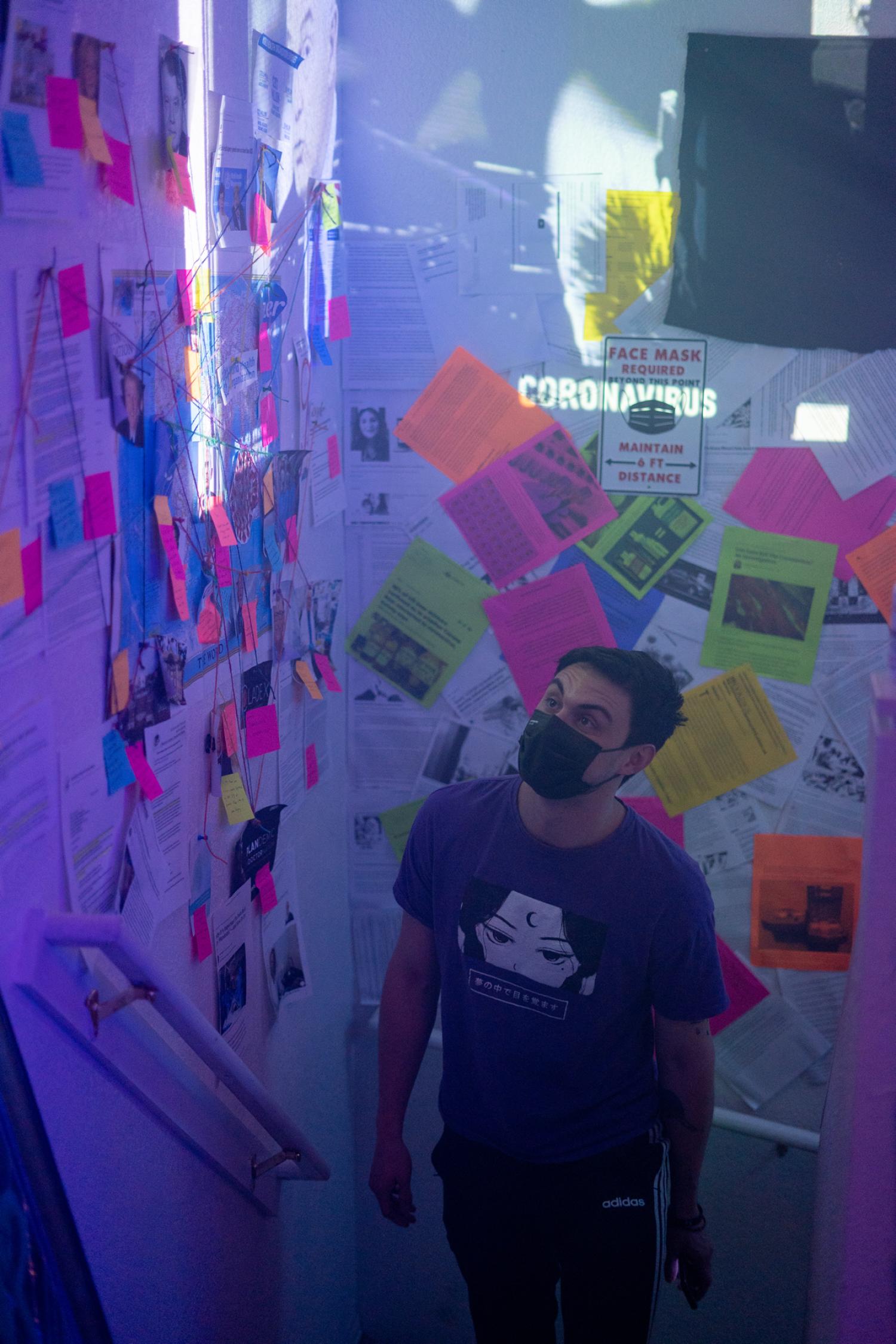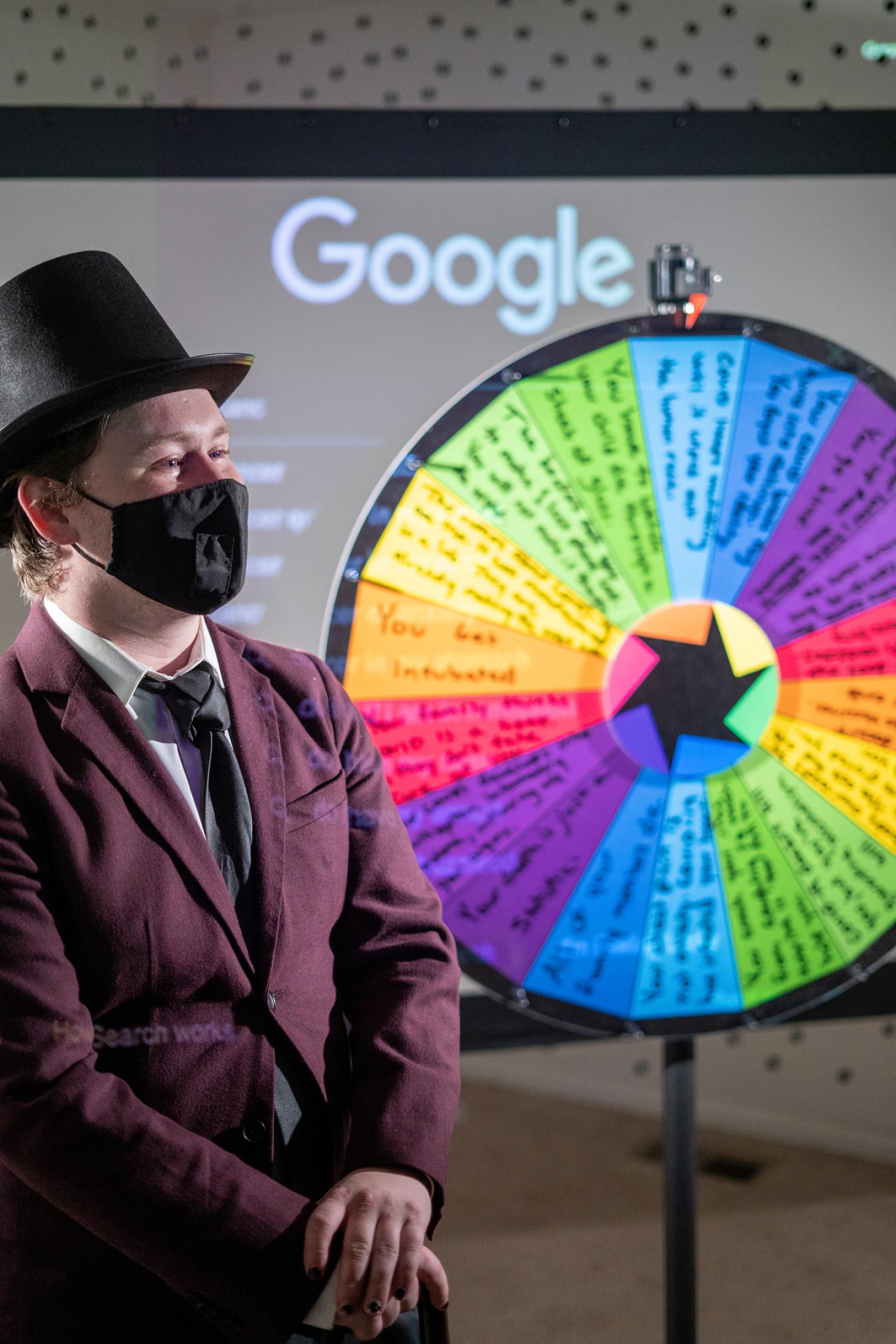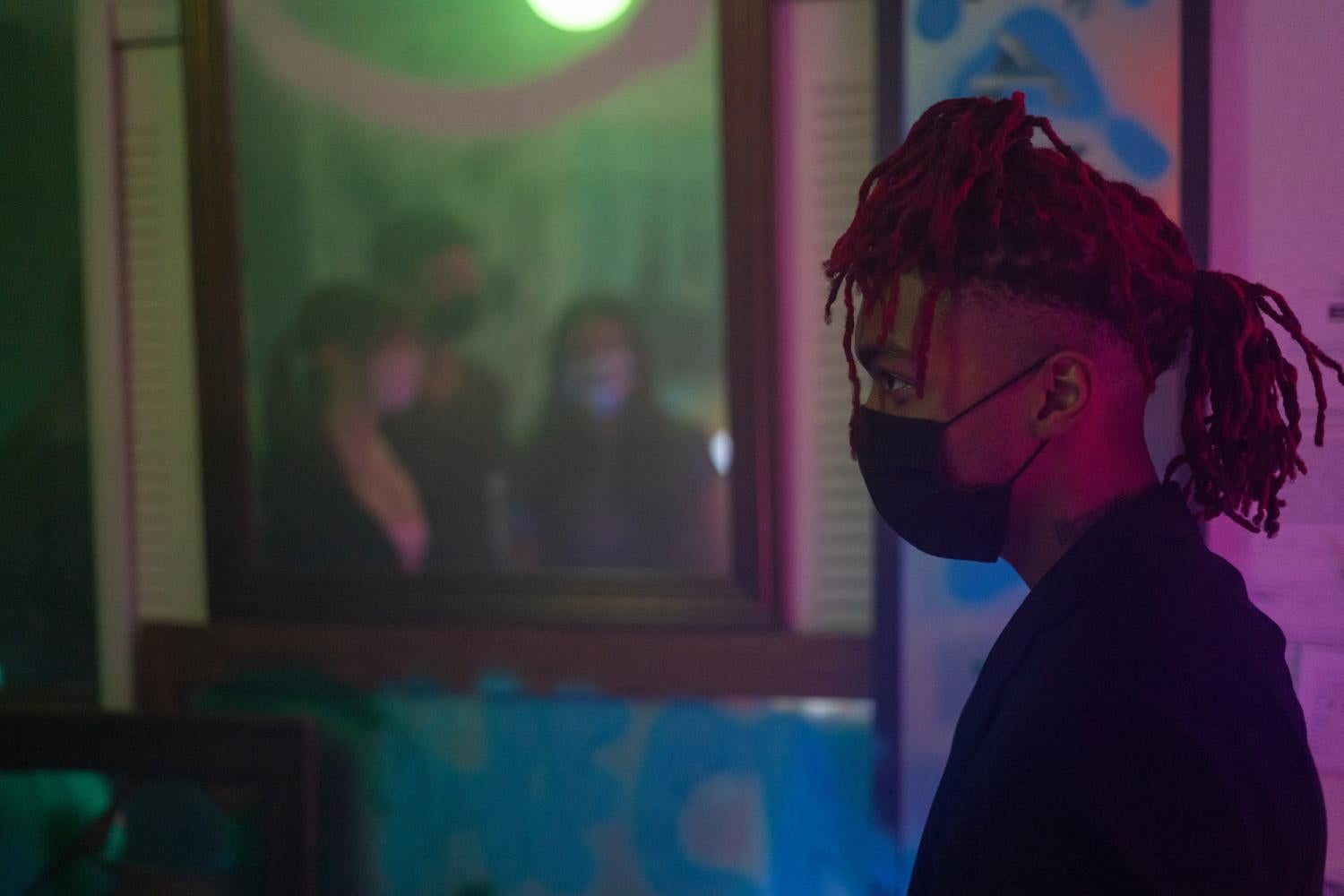In the Loop
How senior Taylor Passios brought her honor's thesis to life
The ICA Loop is a theoretical concept linking (I) information overload, (C) cyberchondria and the (A) attention economy together using relational evidence between the information seekers and COVID-related media.”
Taylor Passios, media production major
The theory is designed to provide comfort to people while helping them recognize their patterns.
The living room was hot, dark, foggy and anxiety inducing. Graffiti covered the mirrors and caution tape stretched across the room.
For media production major Taylor Passios, this nightmare was her reality––one that she created in visceral detail as part of her senior honors thesis project.
A self-proclaimed hypochondriac, Passios conducted extensive research searching for an academic theory naming the anxiety-inducing loop people experience when they Google mundane health symptoms, only to find that the results lead them to believe that they are seriously ill. Without an existing theory to work with, Passios created her own, coining it, the "ICA Loop.”
“The ICA Loop is a theoretical concept linking (I) information overload, (C) cyberchondria and the (A) attention economy together using relational evidence between the information seekers and COVID-related media,” Passios says, adding that the theory is designed to provide comfort to people while helping them recognize their patterns.
Passios has vivid memories of early-life events that spurred her own hypochondria, she says.
In one instance, she recalls, after eating something she was allergic to, her mom ran into the room saying, “Oh my God, we've got to stab you with an EpiPen.” Later in life, she was diagnosed with several different illnesses, which exacerbated her anxiety around health concerns.
“Even if I get the slightest, you know, just like a symptom that no one would think anything of, I hold onto it and I'll start panicking,” she says.




Visitors enter the ICA Loop installation via the Information Overload room, where news articles cover the walls and video clips of pandemic news coverage play on repeat. This room represents the over saturation of both accurate news and misinformation.
Next is the Cyberchondria room, where guests spin the Wheel of Fate, guided by a host played by Passios' roommate. As visitors spin the wheel to land on one of its worst-case scenarios, a video of various symptom-based Google searches projects in the background.
Finally, guests enter the Attention Economy room, where they are handed a shopping list of items to search for. Rather than checking out with money, visitors must Google questions found on each item's price tag. Ultimately, their attention serves as ICA Loop currency.
For visitors, the only way to exit the ICA Loop was by turning off all technology. An actor guarded the top of the stairs to ensure that only those who didn’t buy into the loop were able to leave.
During COVID, Passios noticed that this pattern was exacerbated on a global scale––with people searching for answers in a sea of both information and misinformation posted online.
“Everyone around me, they’re acting the same way I have my entire life,” she says.
In addition to writing her thesis, she wanted to give others a physical sense of this online reality.
Unable to find public space during the pandemic, she turned her own apartment into “a physical interactive installation that represents the theory of the ICA Loop,” she says. To create the installation, Passios removed all of the furniture from the top floor of her apartment, including from her and her roommate’s bedrooms.
The installation was divided into three separate rooms, each designed as an interactive environment that would leave visitors feeling uneasy and anxious. Passios used elements like lighting, heat and a fog machine to evoke a unique emotional response in each of the rooms participants were led through. She even allowed participants to gargle an herb that would change their sense of taste, replicating a symptom of COVID.
“I am taking my personal sanctuary space and turning it into my worst nightmare and living with it,” she says.
Ultimately, Passios says, creating the installation helped her come to terms with who she was.
“I guess that maybe in making the physical installation, I exited the loop myself.”
Kimberly Coffin graduated from CMDI with degrees in critical media practices and strategic communication in 2018.

